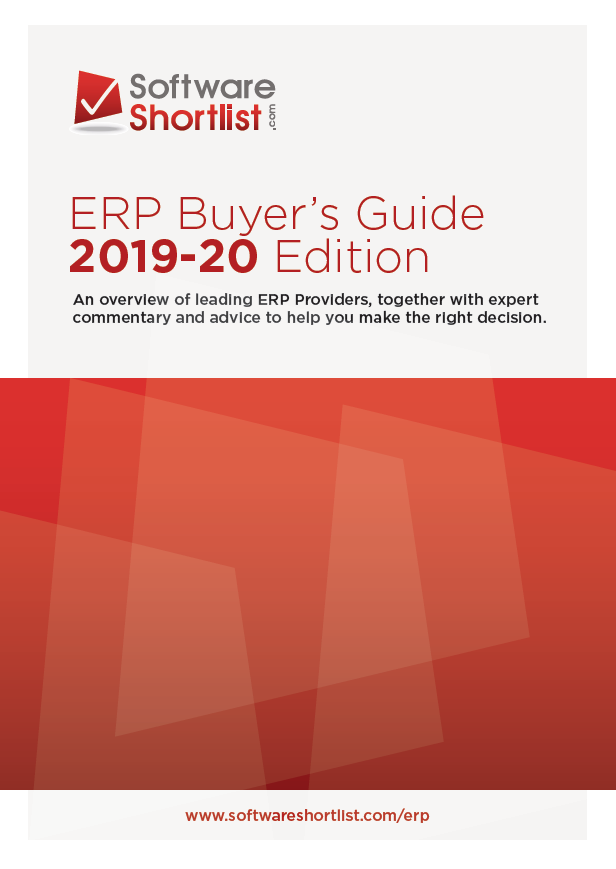If your business growth demands additional software features and functions, you might consider leveraging Software as a Service (SaaS) with your existing ERP software deployment. This article explores the benefits that SaaS can provide to you as an interim solution while growing your business to the point where further customization of your existing ERP infrastructure can then be integrated.
A primary reason to look at SaaS to extend software resources for a limited time is cost savings. Custom extensions to an in-house ERP system can be time consuming and expensive, so it can be worth considering SaaS to get more immediate results and/or prove up the business case for upgrading your ERP. SaaS can deliver:
- Expanded software capability such as ERP CRM, with associated business requirements processes and procedures, integrated effectively and efficiently
- 30-day trial or negotiated pilot programs that allow you to leverage real time business operations specific to your business drivers
- Cost savings, lowered security risk, and less use of internal resources for monitoring and maintenance of the expanded computing infrastructure by:
- Maintaining systems and software
- Using a rapid software update deployment model that delivers changes transparently, accelerating the software lifecycle
- Minimizing security flaws and applying software patches quickly
- Efficient software and server licensing and support contributing to substantially lower total cost of ownership (TCO)
- Flexible subscribe and unsubscribe packages for services you need to fulfill maximum business utilization for the time needed; you simply pay for what you need to use when you need it.
- High availability (HA) for servers during peak business demands at a fraction of cost compared with internal ERP equivalents
- The latest web-enabled benchmarking tools and reports that enable your business to track to best practices.
For example, let’s take a look at some particular business elements whereby SaaS can deliver solutions faster and cheaper, often through a single interface, than extending your traditional ERP environment:
- Real Time Data Access for an expanded base of customers
- Integrated inventory serialization throughout product lines
- Implementation of RF barcode scanners
- Localization (integration of user functions for multiple languages)
- Currency expansion (scaled as business warrants)
- Rebate programs (plug-in spend vs ROI data for maturing product delivery and support cycles)
To be fair to your existing ERP solutions, when considering the use of SaaS to extend software and server functions versus extending your ERP and not using SaaS, here are some differentiating factors to help determine the best strategy for you:
- Simplicity – generally, software deployment is attained more transparently and efficiently in an SaaS environment with the vendor bearing the responsibility and costs
- Flexibility – While SaaS is flexible in its delivery of software and resources, the negotiated pilot program should include incorporation of new customizations that arise during subscription cycles to take full advantage of cost savings while extending software functions in a business growth cycle.
- Software control – Your established business practices might conflict with SaaS necessitating changes to your business requirements that allow software control by your SaaS vendor while holding the vendor responsible for the delivered business process solutions.
- Accessibility – with traditional ERP software, on-site users can access your own intranet regardless of internet connectivity, whereas with SaaS a disruption to web servers impacts your business. Mitigate this by negotiating the best of cloud server and software uptime and failover redundancy aspects with your SaaS vendor.
- Monitored Costs – subscribing to SaaS means providing additional internal resources to work with the SaaS vendor to resolve issues that arise. Costs need to be monitored to avoid overpayment of Saas subscriptions.
In summary, SaaS can provide attractive cost-effective cloud computing alternatives during a business growth cycle where costs need to be contained given that Internal ERP software extensions are time consuming and expensive. SaaS can provide a ‘pay as you go’ solution to extending your software and server functions and capacities for an interim period where you get to see how such extensions are delivered to later expand your traditional ERP environment from derived profits. Use your negotiating skills to arrange the best investment in SaaS that parallels the needs of your business and your customers.



